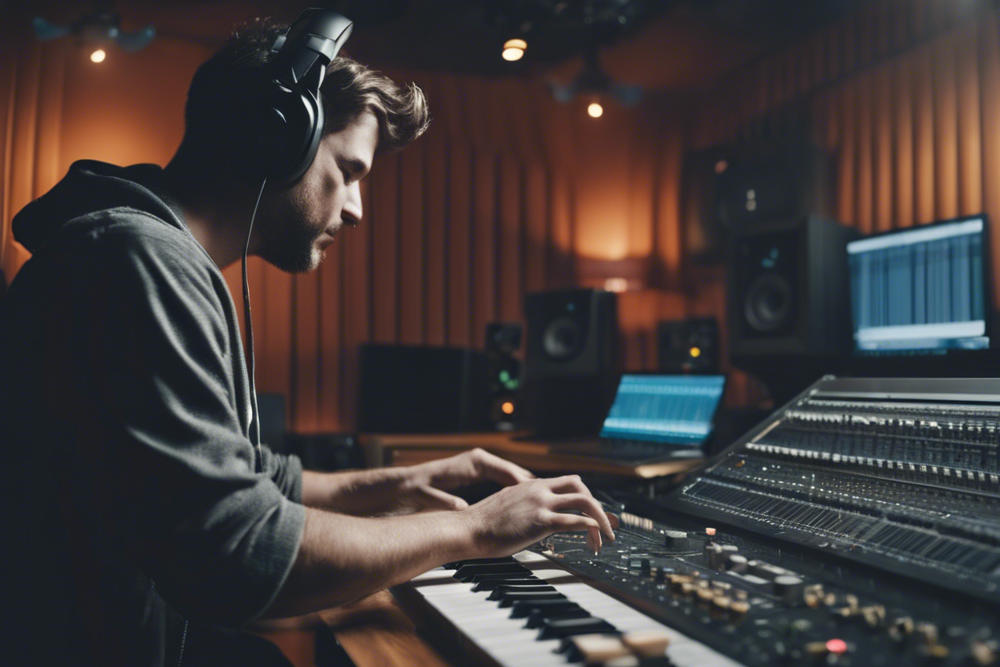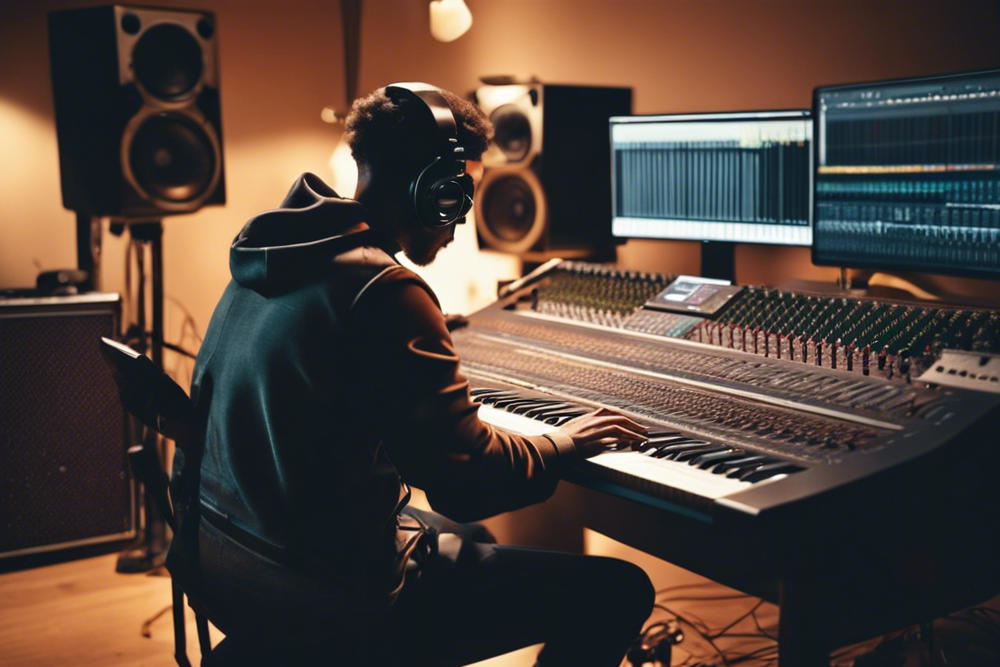Estimated reading time: 8 minutes
The Rise of Trap Music: A Brief History
Trap music, a subgenre of hip hop, has become one of the most influential and popular styles in modern music. Born in the Southern United States during the late 1990s and early 2000s, trap music has its roots in the gritty realities of street life, drug dealing, and the struggles faced by many in urban communities.
The term “trap” itself refers to places where drug deals take place, often abandoned houses or apartments. This context heavily influenced the lyrical content and overall sound of the genre. As trap music evolved, it began to incorporate elements of electronic music, creating a unique and captivating sound that would soon dominate the hip hop landscape.
Table of contents
- The Rise of Trap Music: A Brief History
- The Signature Sound of Trap Music
- Trap Music Artists: From Underground to Mainstream
- The Global Impact of Trap Music
- The Culture and Controversy Surrounding Trap Music
- The Future of Trap Music and Its Artists
- Audio-Video: Best Trap Music Mix 2023 🔥 Hip Hop 2023 Rap 🔥 Phonk 2023
- Conclusion: The Enduring Legacy of Trap Music Artists
- FAQs
The Pioneers of Trap Music
Several artists played crucial roles in shaping the trap genre and bringing it to the forefront of hip hop culture. Some of the most notable pioneers include:
- T.I.: Often credited with coining the term “trap music” with his 2003 album “Trap Muzik”
- Gucci Mane: A major influence on the trap scene, known for his prolific output and distinctive vocal style
- Young Jeezy: Helped popularize the trap sound with his gritty lyrics and hard-hitting beats
- Waka Flocka Flame: Brought a new energy to trap music with his aggressive delivery and party-oriented tracks
These artists laid the foundation for what would become a global phenomenon, inspiring countless others to explore and expand upon the trap sound.
The Signature Sound of Trap Music
Trap music is characterized by its distinctive production style, which sets it apart from other hip hop subgenres. The sound of trap music is instantly recognizable, featuring several key elements that have become synonymous with the genre.
Elements of Trap Music Production
- Heavy Bass: Trap beats are known for their deep, booming bass lines that create a powerful, almost physical presence in the music.
- Roland TR-808 Drum Machine: This iconic drum machine is at the heart of many trap productions, providing the signature kick drums and snares that define the genre. Learn more in our article “what are 808 beats“.
- Layered Synthesizers: Atmospheric and often eerie synth lines contribute to the moody, sometimes dark atmosphere of trap tracks.
- Double or Triple-time Hi-hats: Rapid-fire hi-hat patterns give trap beats their distinctive rhythm and energy.
- Tempo: Trap music typically falls within the range of 130-170 BPM, allowing for both slow, hypnotic grooves and more uptempo, energetic tracks.
Lyrical Content in Trap Music
While the production is a crucial aspect of trap music, the lyrical content is equally important in defining the genre. Trap artists often draw from their personal experiences and observations, touching on themes such as:
- Drug dealing and the realities of street life
- The struggle to overcome poverty and adversity
- Celebrations of success and wealth
- Reflections on fame and its consequences
- Relationships and personal experiences
The honest, often raw nature of trap lyrics has resonated with listeners, contributing to the genre’s widespread appeal and cultural impact.

Trap Music Artists: From Underground to Mainstream
As trap music gained popularity, a new generation of artists emerged, building upon the foundation laid by the pioneers. These artists have not only contributed to the evolution of the trap sound but have also achieved unprecedented levels of mainstream success.
Modern Trap Music Icons
- Future: Known for his distinctive vocal style and prolific output, Future has become one of the most influential figures in modern trap music.
- Migos: This Atlanta-based trio helped popularize the “triplet flow” and brought trap music to new heights of commercial success.
- Travis Scott: Blending trap with psychedelic and rock influences, Scott has created a unique sound that has captivated audiences worldwide.
- Lil Baby: Rising to prominence in the late 2010s, Lil Baby has become one of the most successful trap artists of his generation.
- Lil Uzi Vert: With his eclectic style and genre-blending approach, Uzi has pushed the boundaries of what trap music can be.
These artists, among many others, have helped to solidify trap’s place in the mainstream music landscape, collaborating with pop artists and topping charts around the world.
The Global Impact of Trap Music
Trap music’s influence has extended far beyond its Southern roots, inspiring artists and producers across the globe. This widespread appeal has led to the emergence of regional trap scenes and fusion genres.
International Trap Scenes
- UK Drill: A British take on trap music, incorporating elements of grime and UK garage.
- Latin Trap: Blending trap with reggaeton and other Latin American styles.
- Asian Trap: Artists in countries like China and South Korea have embraced and adapted the trap sound.
Trap’s Influence on Other Genres
The impact of trap music can be heard across various genres:
- Pop music has incorporated trap beats and production techniques.
- EDM producers have created “Trap EDM,” fusing electronic dance music with trap elements.
- Rock and alternative artists have experimented with trap-inspired rhythms and production.
This cross-pollination has further cemented trap’s status as a major force in contemporary music.

The Culture and Controversy Surrounding Trap Music
While trap music has achieved enormous popularity, it has not been without controversy. Critics have raised concerns about the genre’s often explicit lyrical content and its potential glorification of drug use and violence.
Addressing the Criticisms
Defenders of trap music argue that:
- The genre provides a platform for artists to share their experiences and shed light on important social issues.
- Trap music’s success has created opportunities for many artists to escape poverty and difficult circumstances.
- The genre’s evolution has led to more diverse lyrical content, moving beyond its original themes.
Trap Music as a Cultural Phenomenon
Beyond the music itself, trap has become a significant cultural force:
- Fashion: Trap artists have influenced streetwear trends and high fashion alike.
- Language: Trap lyrics have introduced new slang terms and phrases into popular culture.
- Visual Art: The aesthetic of trap music videos and album covers has inspired visual artists across various mediums.
The Future of Trap Music and Its Artists
As trap music continues to evolve, new artists and subgenres are emerging, pushing the boundaries of what trap can be. Some trends to watch include:
- Increased genre-blending, with trap elements appearing in unexpected musical contexts.
- The rise of female trap artists, bringing new perspectives to the genre.
- Continued global expansion, with trap influencing and being influenced by diverse musical traditions.
Audio-Video: Best Trap Music Mix 2023 🔥 Hip Hop 2023 Rap 🔥 Phonk 2023
Conclusion: The Enduring Legacy of Trap Music Artists
From its humble beginnings in the Southern United States to its current status as a global phenomenon, trap music has come a long way. The artists who have shaped and continue to define the genre have left an indelible mark on the music industry and popular culture as a whole.
As we look to the future, it’s clear that trap music’s influence will continue to be felt for years to come. Whether through the work of established stars or the emergence of new, innovative voices, trap music remains a vibrant and exciting genre that continues to captivate listeners around the world.
For fans of hip hop and music lovers in general, exploring the world of trap music offers a rich and rewarding experience. From the gritty realism of its lyrics to the hypnotic power of its beats, trap music provides a window into a unique and influential musical culture that has truly changed the game.
Related Posts
- What Is Trap Music? Discover the Basics of Trap Music
- What is Grime Music? From East London’s Underbelly to Global Beats
FAQs
Trap music is a subgenre of hip hop that originated in the Southern United States during the late 1990s and early 2000s. It is characterized by heavy bass, the Roland TR-808 drum machine, layered synthesizers, and rapid hi-hat patterns, reflecting themes of street life and struggles.
Notable pioneers of trap music include T.I., credited with coining the term with his 2003 album “Trap Muzik,” Gucci Mane, Young Jeezy, and Waka Flocka Flame. These artists played crucial roles in shaping and popularizing the trap genre.
Trap music has evolved by incorporating elements of electronic music, gaining mainstream success, and influencing various genres such as pop, EDM, and rock. Modern icons like Future, Migos, Travis Scott, Lil Baby, and Lil Uzi Vert have further diversified and popularized the trap sound.
Trap music’s influence has spread worldwide, leading to regional variations like UK Drill, Latin Trap, and Asian Trap. It has also impacted other genres, with trap elements being incorporated into pop, EDM, and rock music, showcasing its broad cultural and musical reach.
Critics of trap music argue it glorifies drug use and violence. Defenders say it highlights important social issues and offers artists opportunities to escape poverty. Over time, trap’s lyrical content has diversified, addressing a wider range of themes beyond its original focus.
